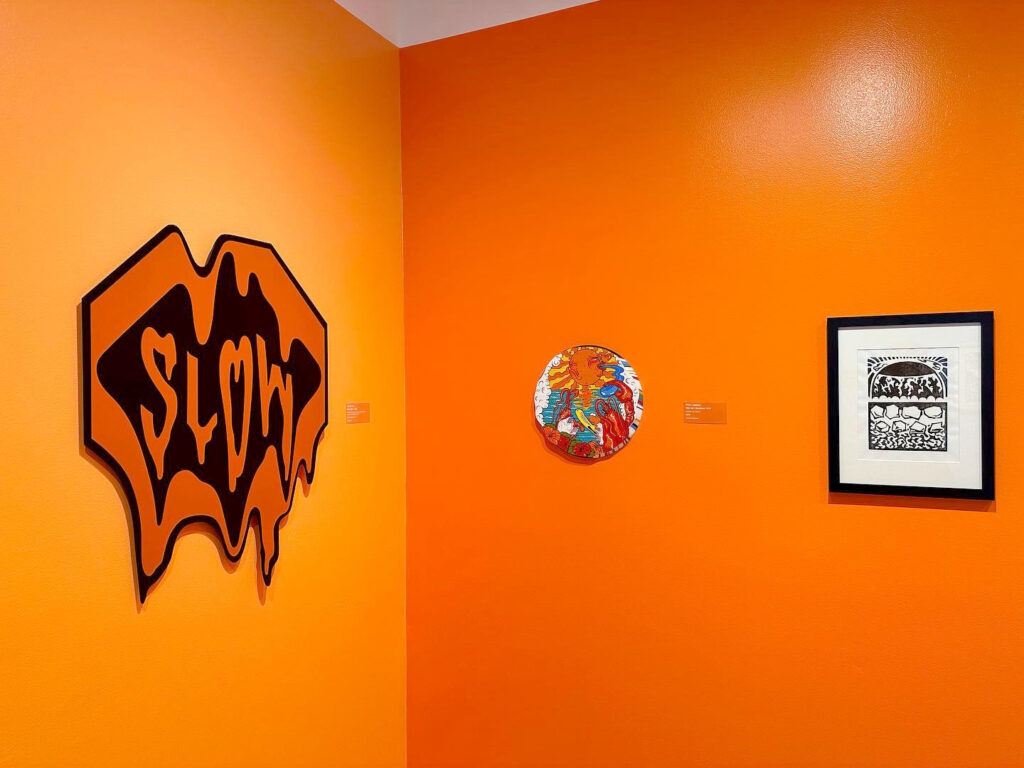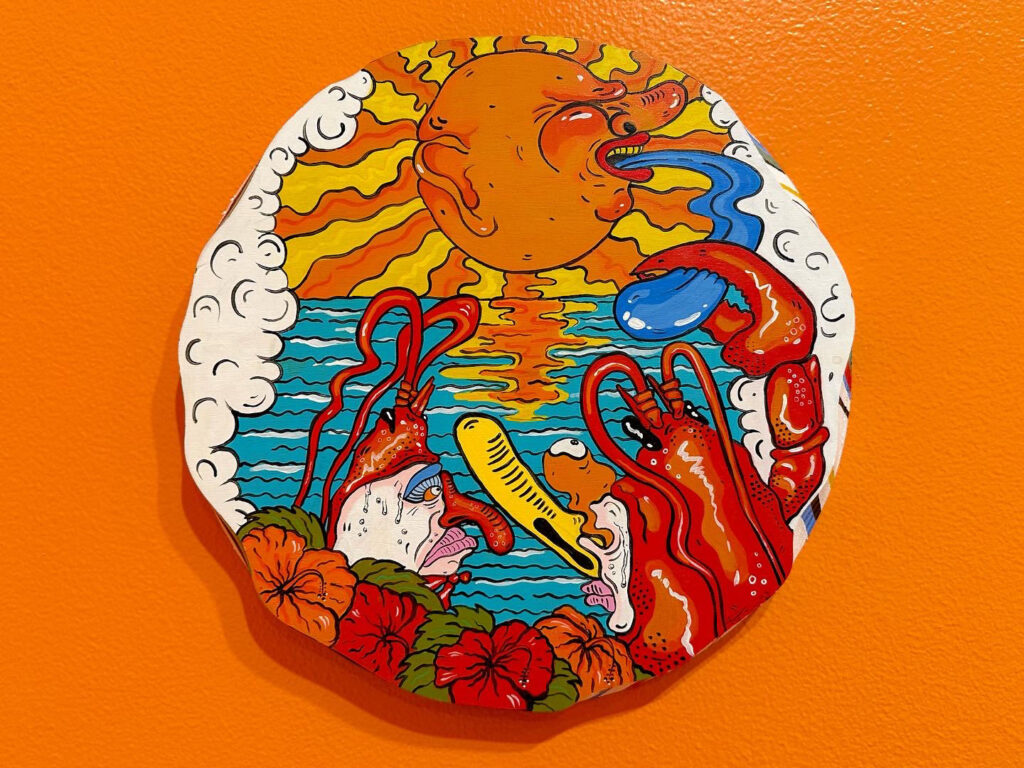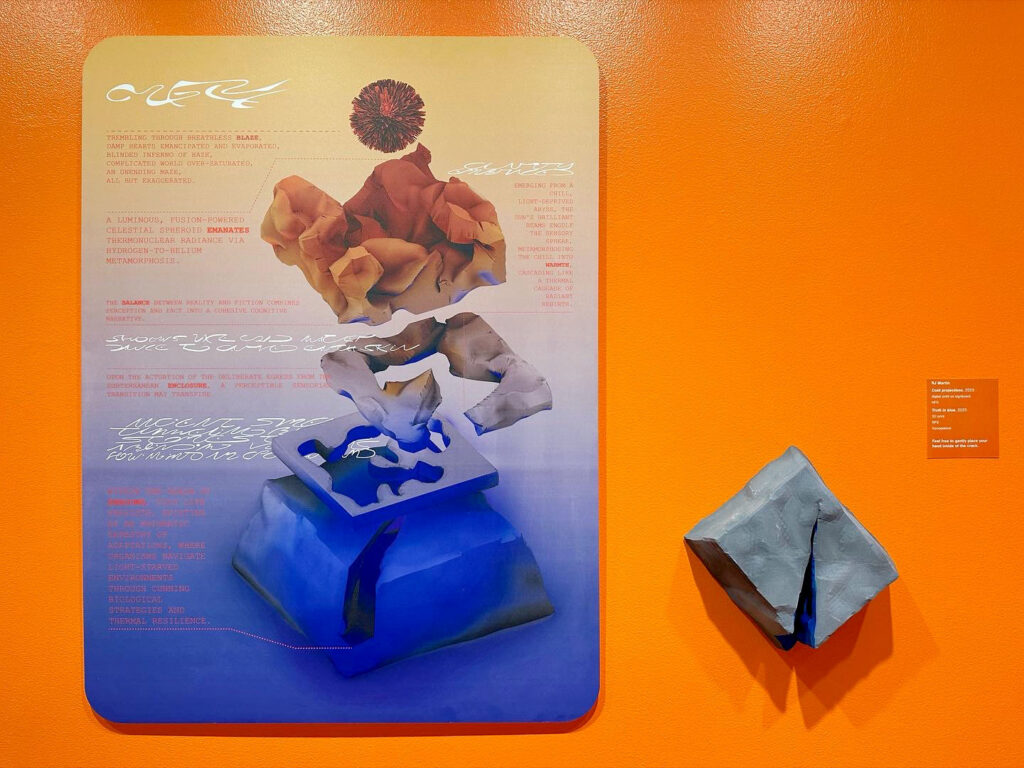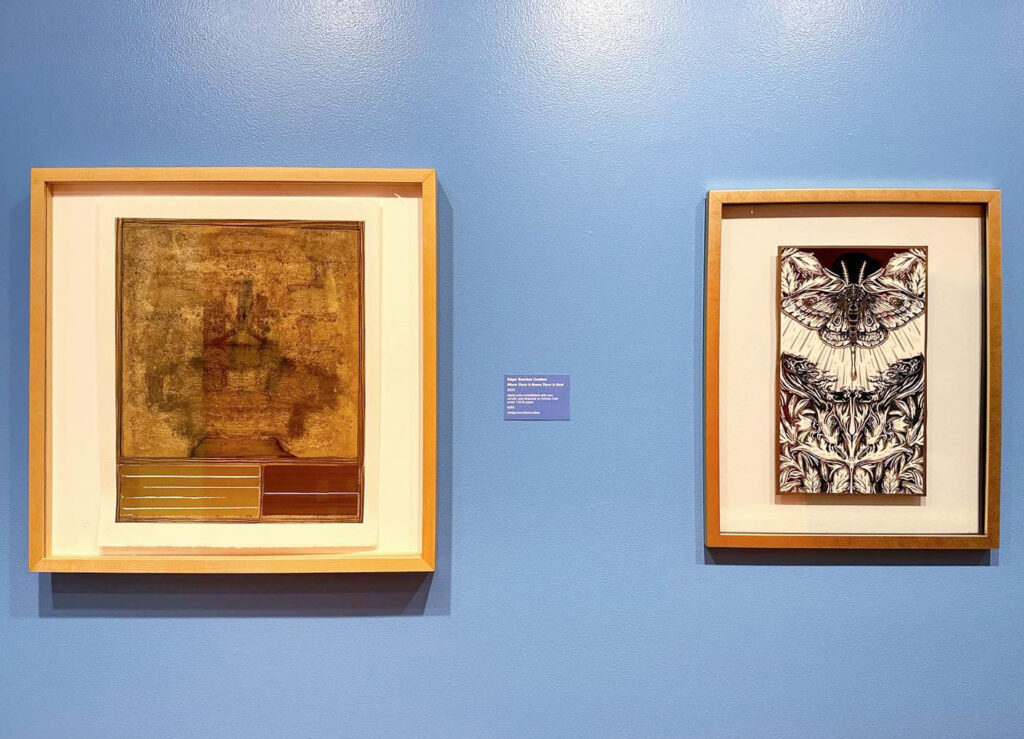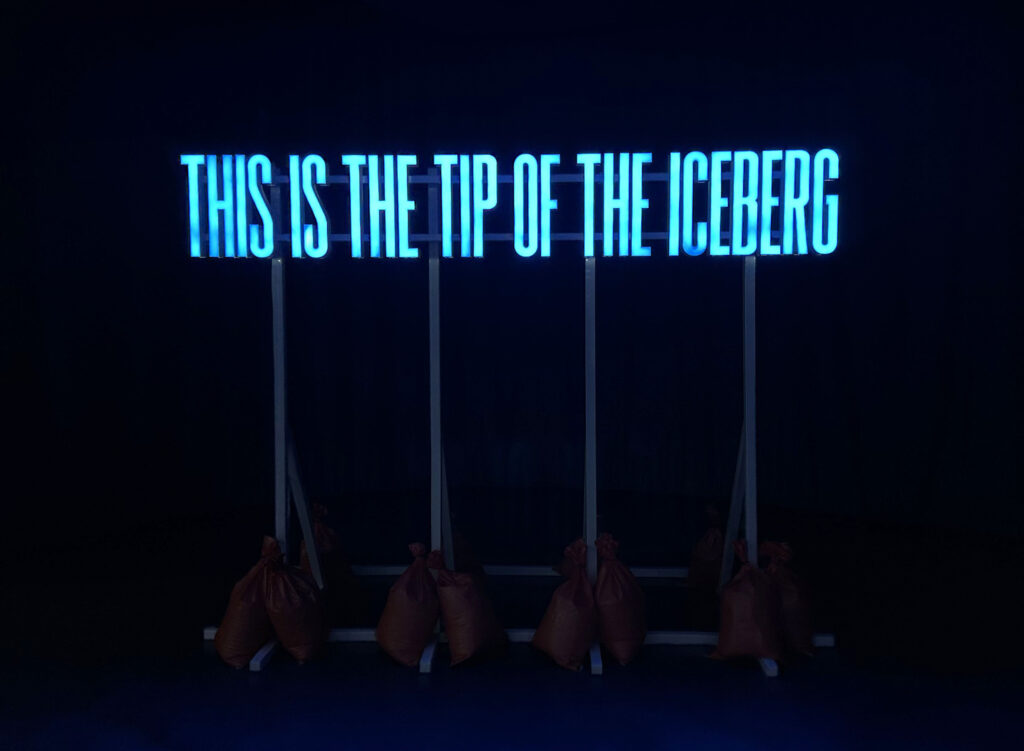
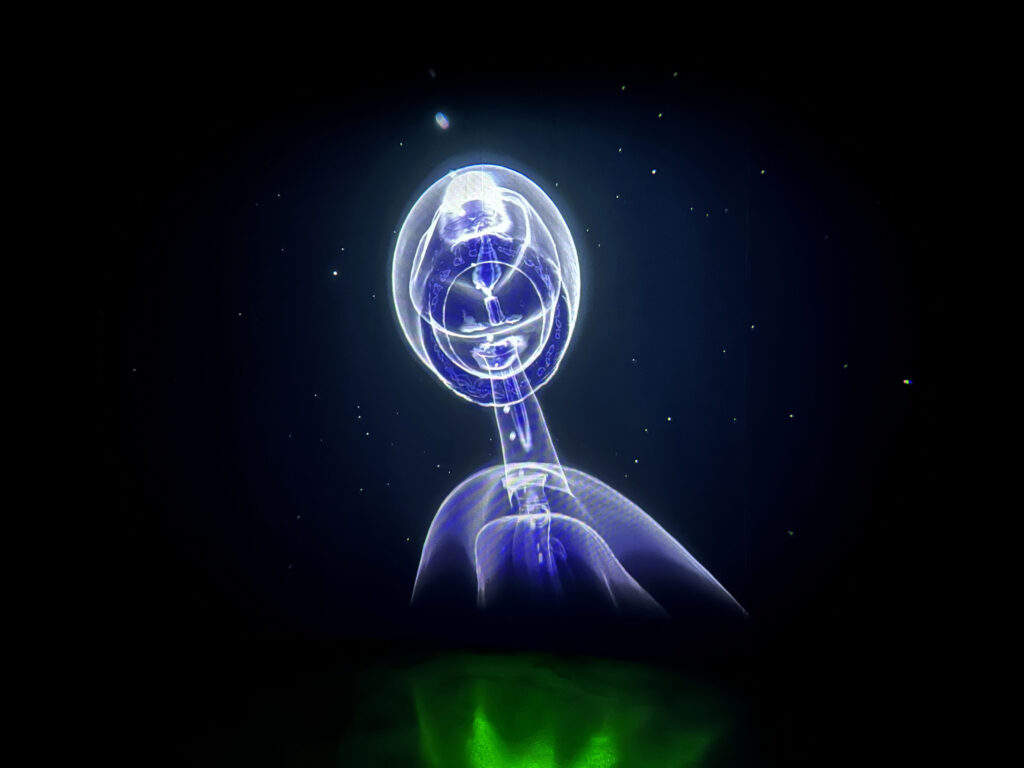
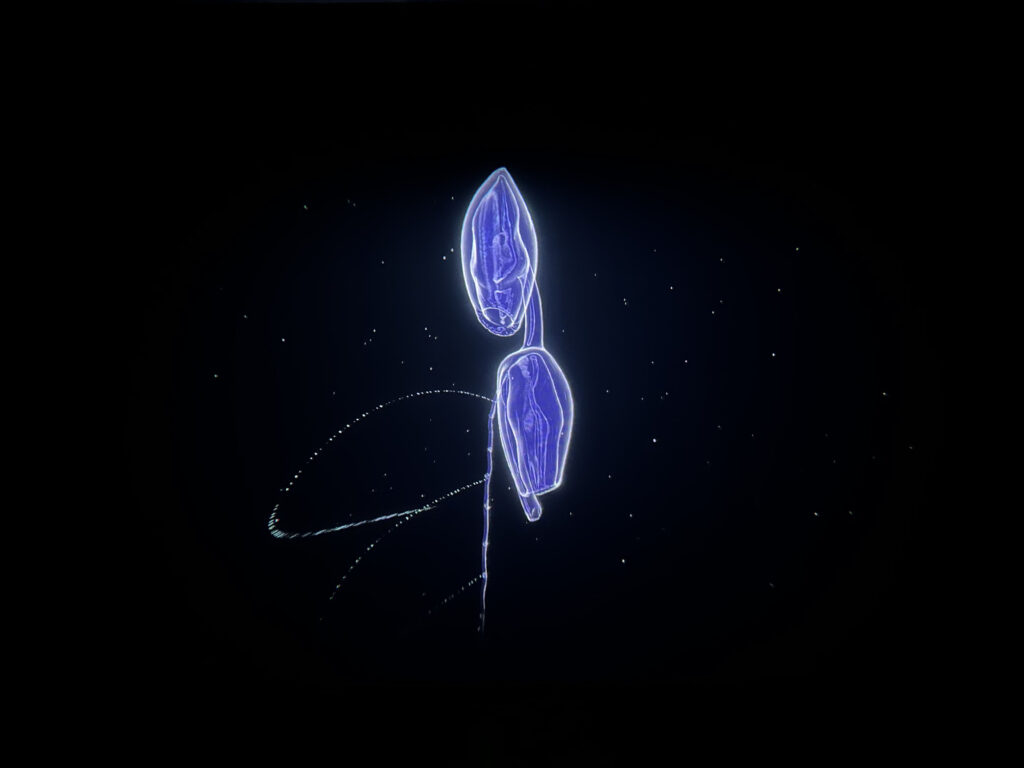
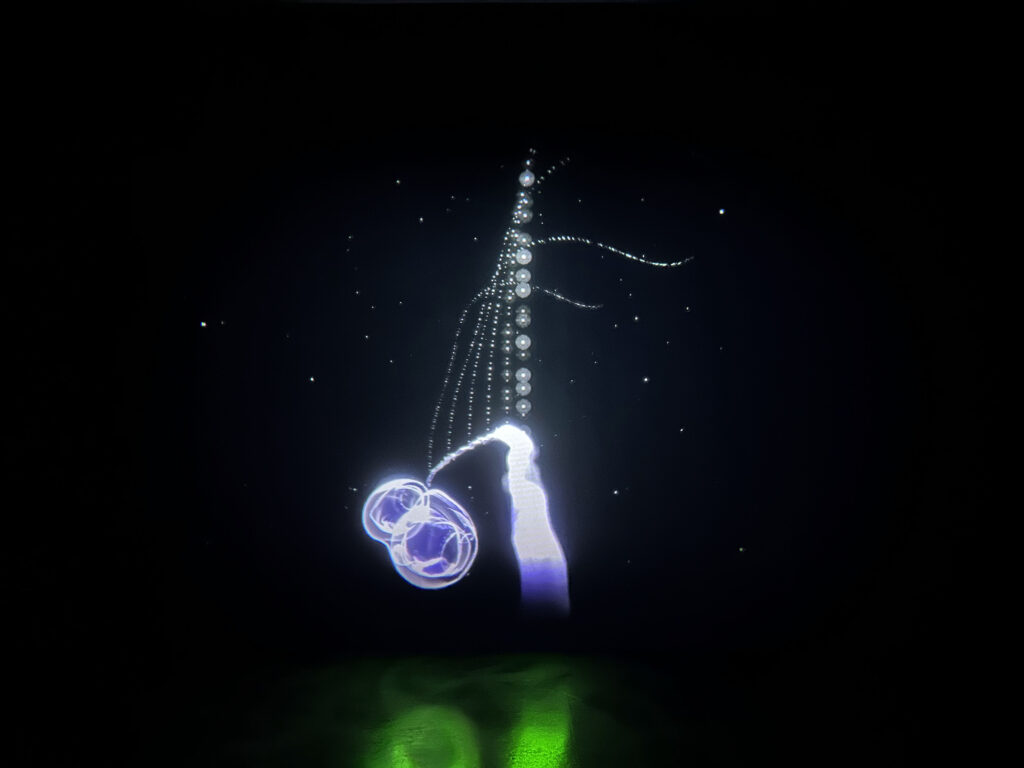
The images above are from SUPERFLEX: This Is The Tip Of The Iceberg, GENERATOR: USF Contemporary Art Museum’s inaugural exhibition. The two part exhibition includes a sculptural installation and the mesmerizing interactive animation Vertical Migration, in which viewers encounter a siphonophore that reacts to their movements.
From the gallery about the exhibition-
This Is The Tip Of The Iceberg emerges from SUPERFLEX’s in-depth research into the deep sea, biodiversity, and the climate. The exhibition immerses viewers in two parallel and interconnected realms, separated by a curtain which acts as an imaginary filter between land and sea. Passing through the curtain brings visitors from a terrestrial space unsettled by rising water to the ocean’s dark depths, to meet one of the most important cleaners of the ocean, the siphonophore. Relatives of the jellyfish, siphonophores bring between two and six billion tons of carbon a year from the surface down to the seabed, where it is stored. This Is The Tip Of The Iceberg offers an opportunity to encounter this unfamiliar species, prompting reflection on the impacts and consequences of climate change, especially relevant to Florida and its coastal communities, and encouraging humans to imagine a future defined by interspecies living and ecological coexistence.
For a more detailed discussion of the work, the gallery has created an exhibition catalogue that can be viewed online or downloaded as a pdf.
Vertical Migration was originally created in 2021 by SUPERFLEX for ART 2030 and was projected on the United Nations Secretariat Building in NYC during the 76th United Nations General Assembly.
SUPERFLEX’s statement on the project-
The sea is not an abyss. It teems with an almost unimaginable array of life. Every night, the largest biological migration on Earth takes place, as trillions of creatures travel closer to the surface to feed. Some of these animals, like shrimp, are well-known. Others, like siphonophores—relatives of jellyfish—are unfamiliar: varying wildly in size, from the slightness of a fingernail to the length of a whale, they look like nothing that we find on land.
How does it feel to be one of these creatures? To explore this question, SUPERFLEX designed a computer-generated siphonophore and created an animated film, Vertical Migration, depicting its ascent. At first, the film mechanically circles the creature, getting closer and closer while giving the audience a view of it from all angles. But eventually the perspective shifts, the camera’s movements become more fluid, and the viewer sees the world from the perspective of the siphonophore.
Unsettling our perceptions of scale and otherness, Vertical Migration is an intimate encounter with a life form that bears no resemblance to human beings, though we share a planet, an ecosystem, and a future. Because of sea-level rise, humans will also be migrating vertically in the coming centuries, to higher elevations and raised buildings. The siphonophore’s story is our story. Though we can never experience its journey through the pitch-black ocean depths, we can shift our perspective to recognize that we’re connected, that our actions affect each other, and that we share a common fate.
For a look at the work in motion, below is the trailer from ART 2030.
About SUPERFLEX from their website-
SUPERFLEX was founded in 1993 by Jakob Fenger, Bjørnstjerne Christiansen, and Rasmus Rosengren Nielsen. Conceived as an expanded collective, SUPERFLEX has consistently worked with a wide variety of collaborators, from gardeners to engineers to audience members. Engaging with alternative models for the creation of social and economic organisation, works have taken the form of energy systems, beverages, sculptures, copies, hypnosis sessions, infrastructure, paintings, plant nurseries, contracts, and public spaces.
Working in and outside the physical location of the exhibition space, SUPERFLEX has been engaged in major public space projects since their award-winning Superkilen opened in 2011. These projects often involve participation, involving the input of local communities, specialists, and children. Taking the idea of collaboration even further, recent works have involved soliciting the participation of other species. SUPERFLEX has been developing a new kind of urbanism that includes the perspectives of plants and animals, aiming to move society towards interspecies living. For SUPERFLEX, the best idea might come from a fish.
This exhibition closes 11/22/23.


